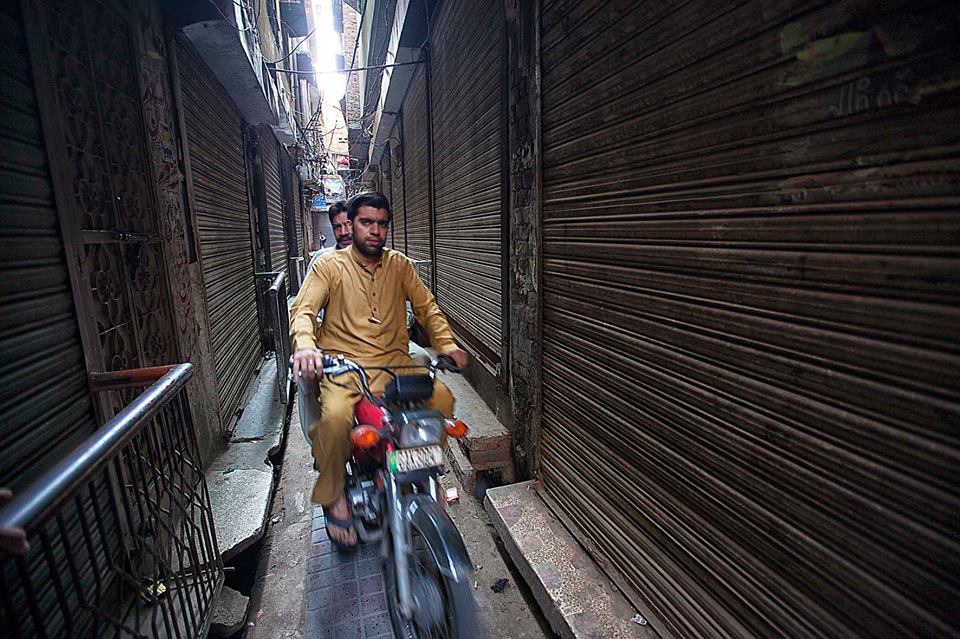As Ranjit Singh expanded his empire, it was Hari Singh Nalwa, his valiant Commander-in-Chief who took it to the mouth of the Khyber Pass in the western frontier. After the partition of 1947, Maulvi Mahmood Yasin who migrated from Ludhiana had occupied the residence of Hari Singh Nalwa in Gujranwala. On his death, Maulvi Mahmod Yasin was buried within the premises itself. Presently, the only indication of it ever having been the residence of Hari Singh Nalwa, is a plaque embedded by the British on one of its walls which reads ‘Residence of Sirdar Hari Singh Nalwa AD 1791 – 1837’.
I had approached the residence of Hari Singh Nalwa through the narrow alley of the market, in which a motorbike could barely fit. This market is built on the lands of the once impressive garden belonging to Hari Singh Nalwa where he had planted rare trees and plants, many brought from as far as Kashmir and China. It is believed that Mandarin Oranges were first planted in the Punjab in this garden. Baron Charles Hugel, who travelled across Kashmir and Punjab in early 1830s has mentioned in his travelogue, “….the garden, which was the MOST BEAUTIFUL AND THE BEST that I had seen in India.”
In observing the garden turned into a maze of narrow alleys and shuttered shops, I could not help but reflect how harsh destiny has been towards the Sikh legacy. The sad outcome of partition is that today one can’t find any trace of the once ‘MOST BEAUTIFUL AND THE BEST’ garden. Interestingly, elsewhere across India and Pakistan, the many historical gardens in cities like Delhi, Lahore and Kashmir continue to be in full glory.
Partition indeed reduced the Sikh legacy as a cucumber between the sandwich.
Photographed in Oct 2014, during the research for the book “LOST HERITAGE The Sikh Legacy in Pakistan”
